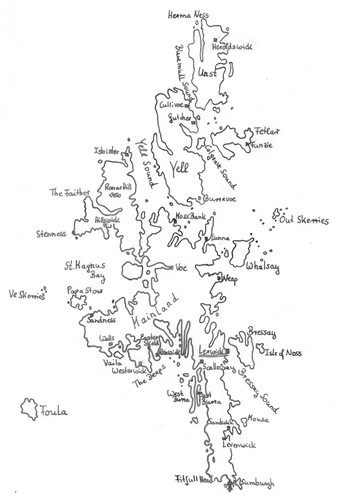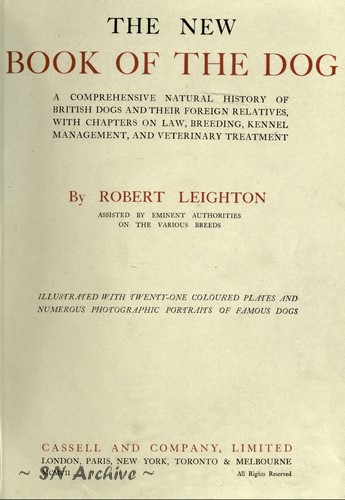 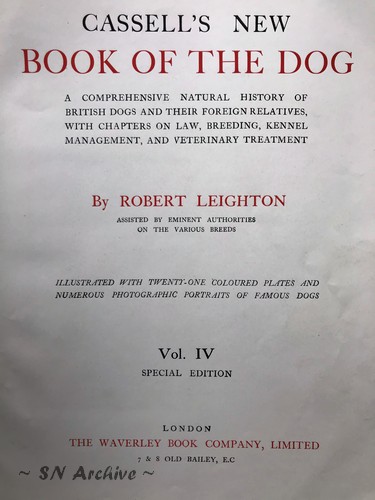 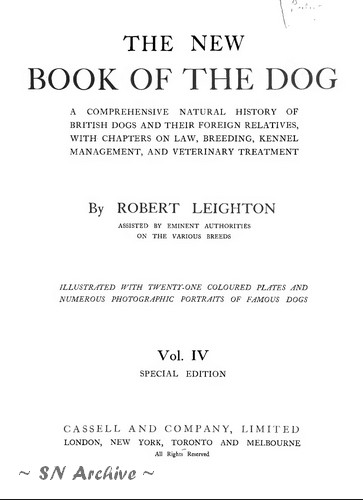 |
THE NEW BOOK OF THE DOG Robert Leighton assisted by eminent authorities on the various breeds, Cassell And Company Ltd., London, GB, 1907 CASSELL'S NEW BOOK OF THE DOG - Vol. IV SPECIAL EDITION Robert Leighton, The Waverley Book Company, Ltd., London, GB, about 1909 (no year given) *1) THE NEW BOOK OF THE DOG - Vol. IV SPECIAL EDITION Robert Leighton, Cassell And Company Ltd., London, 1911 |
This book and its editions give "A Comprehensive Natural History Of British Dogs And Their Foreign Relatives, With Chapters On Law, Breeding, Kennel Management, And Veterinary Treatment". James C. Dalgliesh wrote Chapter IX about THE COLLIE (Working, Rough & Smooth Coated, Bearded) and Audrey Hopwood in Chapter X about THE OLD ENGLISH SHEEPDOG - with numerous photos of well known dogs, but there is no photo of a Shetland Sheepdog.
On Page 469 (all editions) Robert Leighton himself wrote in half a page about the so-called "Miniature Collie."
Both Cassell And Company's editions (1907 and 1911) have the same text content:
"MINIATURE COLLIE.
If there were any real scarcity of toy dogs it might be possible tor rear a new variety from our own midst by a recourse to the diminutive Shetland Collie, which has many recommendations as a pet. Like the sturdy little Shetland pony, this dog has not been made small by artificial selection. It is a Collie in miniature, no larger than a Pomeranian, and it is perfectly hardy, wonderfully sagacious, and decidedly beautiful.
They are scare, even in their native islands, where chance alone seems to breed them rather than design: but occasionally one may be brought to the mainland or to Ireland by the fishermen in the herring season, and left behind as a gift to some friend. At first glance the dog might easily be mistaken for a Belgian Butterfly dog, for its ears are somewhat large and upstanding, with a good amount of feather about them; but upon closer acquaintance the Collie shape and nature become pronounced.
The body is long and set low, on stout, short legs, which end in long-shaped, feathered feet. The tail is a substantial brush, beautifully carried, and the coat is long and inclined to silkiness, with a considerable neck-frill. The usual weight is from six to ten pounds, the dog being of smaller size than the bitch. The prettiest are all white or white with rich sable markings, but many are black and tan or all black. The head is short and the face not so aquiline as the large Collie. The eyes are well proportioned to the size of the head, and have a singularly soft round brightness reminding one of the eye of a woodcock or a snipe.
The Shetlanders use them with the sheep, and they are excellent little workers, intelligent and very active, and as hardy as terriers. Dog lovers in search of novelty might do worse than take up this attractive and certainly genuine breed before it becomes extinct. An anonymous writer in one of the kennel papers recently drew attention to its possibilties as a pet; and the Editor of this work is aquainted with a lady in Belfast who owns a typical specimen, but as yet the fascinations of the tiny Sheltie are commonly ignored.
R.L."
The text in the Waverley Book Company edition (about 1909 - no year given) is slightly different:
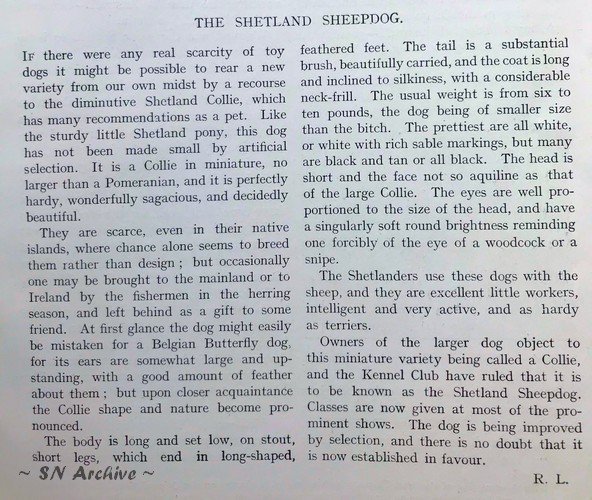
If you discover any errors in the text that may have been caused by the transcription, please let us know for a prompt correction.
*1) Original in Eva-Maria Krämer collection - a German translation can be found in COLLIE REVUE No. 7, march 1979

